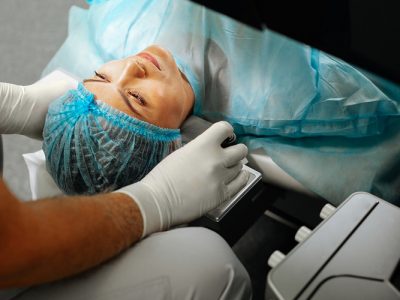Living with scoliosis involves dealing with spinal misalignment that causes persistent discomfort, visible imbalance, and in some cases, limited mobility. Seeking timely treatment remains crucial to avoid worsening symptoms. Many are turning to chiropractic in Singapore as a non-invasive and effective option to manage scoliosis. Understanding the condition and available approaches helps individuals make informed choices that support long-term spine health.
Understanding Scoliosis and Its Functional Impact
Scoliosis treatment presents with varying severity across individuals. While some cases remain mild and asymptomatic, others lead to chronic pain, posture issues, and even breathing difficulties. The condition involves a sideways curvature of the spine, often diagnosed during adolescence but not exclusive to younger individuals.
As scoliosis progresses, the muscles, joints, and nerves continue to face stress. Over time, these imbalances disrupt normal movement patterns, reduce flexibility, and impair strength. Patients may notice uneven shoulders, an unbalanced gait, or visible spinal curvature.
Traditional management options include observation, bracing, physical therapy, and surgery in severe cases. However, individuals increasingly explore complementary approaches such as chiropractic adjustments to reduce discomfort, support better alignment, and maintain spinal mobility.
How Chiropractors Support Scoliosis Management
Consulting a chiropractor in Singapore offers a conservative, hands-on strategy that focuses on spinal correction and functional support. Chiropractors use techniques that help address misalignments, relieve muscle tightness, and reduce nerve irritation linked to scoliosis.
Rather than attempting to “straighten” the spine completely, chiropractors aim to minimise asymmetries that cause strain and pain. Techniques involve precise spinal adjustments, soft tissue mobilisation, and posture retraining. Some chiropractors also introduce home-based exercises to support progress between sessions.
Treatment plans remain highly individualised. Chiropractors assess the degree of spinal curvature, current symptoms, and any functional limitations before proposing a customised approach. Follow-up care supports tracking improvements over time and adjusting techniques as necessary.
What sets chiropractic care apart lies in the capability to focus on movement, function, and everyday comfort. Rather than relying solely on passive observation, chiropractic patients stay actively involved in their recovery process, often reporting better mobility, reduced stiffness, and improved quality of life.
Why Early Chiropractic Intervention Makes a Difference
Seeking chiropractic care early allows individuals to respond before scoliosis progresses. While chiropractic cannot cure scoliosis, it helps manage pain, promote flexibility, and slow curvature advancement through targeted support.
For young individuals with developing spines, chiropractic sessions work alongside conventional methods, like bracing or physical therapy. Chiropractors monitor postural changes and offer movement-based strategies that support spinal health during growth.
In adults, scoliosis typically presents with stiffness, muscular fatigue, and nerve-related symptoms. Chiropractic adjustments reduce restrictions that worsen over time. Maintaining consistent treatment helps prevent compensation in other body areas, reducing secondary problems, such as hip or knee pain.
Early attention also avoids reliance on pharmaceutical solutions for pain relief. Chiropractic offers a drug-free approach that prioritises functional improvement and long-term wellness. Regular care supports spinal health as patients move through different life stages.
What to Expect from a Scoliosis-Focused Chiropractor in Singapore
Choosing the right chiropractor in Singapore involves finding someone with experience in scoliosis treatment. Initial consultations typically include detailed postural assessments, movement analysis, and possibly spinal imaging referrals for precise curvature tracking.
Treatment sessions involve careful adjustments designed to restore balance without force. Chiropractors combine manual techniques with education, showing patients how to sit, move, and rest without worsening the curve.
Some clinics may use traction tools, mobility aids, or resistance bands to improve outcomes. Patients are encouraged to stay proactive, follow home care routines, and attend regular progress reviews.
Effective chiropractic support for scoliosis requires commitment, communication, and tailored care. Results come gradually, with improvements in flexibility, pain levels, and daily comfort serving as key indicators of success.
Final Thoughts
Managing scoliosis takes a strategic and well-informed approach. Chiropractic care continues gaining traction as a supportive treatment pathway, offering hands-on, personalised, and mobility-focused results. For those dealing with scoliosis in Singapore, the right chiropractor can make a practical difference in daily life and long-term well-being.
Contact TRUE Chiropractic today to speak with a qualified chiropractor in Singapore who understands scoliosis and delivers care tailored to your spine’s unique needs.













Comments